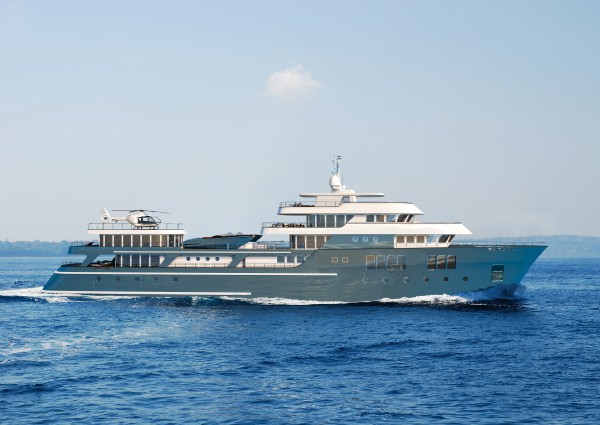How to design the perfect explorer yacht
What are the key elements of a successful explorer vessel?
Traditional explorer vessels and trawlers were designed with the superstructure aft, which architecturally speaking, is a much more effective placement - with the superstructure in a more protected position from the most pointed physical forces than on conventional yachts. But this was before the days of additional tenders and toys.
Ever since, the idea of having a tough explorer vessel fell into the hands of the superyacht market however, this design was essentially turned on its head, and the superstructure was subsequently positioned forward, giving these ‘functional’ vessels a look which is softer on the eye and now more effective for the protection of tenders and other equipment.
The superyacht industry’s love affair with explorers has changed our perception of what a traditional explorer actually looks like, which is why it is particularly nice to see a design studio calling on traditional elements of a design that has been lost in the modern era of yachting. Gill Schmid Design has created an 80m explorer concept called Sea the Stars, based on this very tradition. While the American design studio has kept the main superstructure forward – which at the moment seems is what the market wants – a number of other features clearly indicate that Gil Schmid Design has paid homage to classic explorer design.
“Flexibility in operations and experiences are the key elements of creating an explorer vessel”, says co-founder Veronika Schmid. “Explorers are so much more performance-based than conventional superyachts, in a sense that they need to be very adaptive to different environments, adventures and demands. The more successful explorer designs are the ones which perform to clients’ wishes, whilst retaining the luxurious aspects of a conventional superyacht.”
The term ‘explorer’ does seem to fall victim to prolonged misuse, with eploration meaning all things to all people. But what is universal is that it involves leaving one’s comfort zone. However, it seems that we often presume that a boat with the ‘explorer’ prefix can take on the world, when often this isn’t exactly the case.
As Bart Bouwhuis eloquently put in a recent interview, “The explorer is like the SUV, and despite the great SUV cars available to the market, only a select few can go off-road and perform well – it is the same for explorers.”
There is, it would seem, a huge market for the functional vessel – but it’s so important to consider what it can actually do before falling in love with its exterior design, which could essentially be nothing more than an attractive body kit.
In recent years, we’ve seen a number of commercial conversion concepts, such as the 81.7m Vard project Kilkea, designed by Bannenberg and Rowell, which is based on an existing hull. These are quite interesting projects, as their hull configuration has been designed for a different, often very specific purpose. As a result, their conversions can be extremely complex, yet when pulled off successfully, wonderfully spectacular.
The refit market makes up a vast percentage of fleet construction, and it is a sector that is often very attractive for clients who may be able to get a good deal on an existing platform. However, it’s debateable whether these projects are structurally sound enough to deliver the true superyacht experience.
There is a message here, and it seems to be about honest design – designing a yacht that doesn’t hide behind what it looks like, but actually performs in the way one would hope. It’s all very well to create something that looks fantastic, but ensuring the yacht performs as well as it looks like it should, is really the only way to fulfil a client’s expectations.
Designers can sign up to receive a VIP complimentary subscription to The Superyacht Report here. Don't miss issue 183, the Design special of The Superyacht Report and sign up - available to download now.
NEW: Sign up for SuperyachtNewsweek!
Get the latest weekly news, in-depth reports, intelligence, and strategic insights, delivered directly from The Superyacht Group's editors and market analysts.
Stay at the forefront of the superyacht industry with SuperyachtNewsweek
Click here to become part of The Superyacht Group community, and join us in our mission to make this industry accessible to all, and prosperous for the long-term. We are offering access to the superyacht industry’s most comprehensive and longstanding archive of business-critical information, as well as a comprehensive, real-time superyacht fleet database, for just £10 per month, because we are One Industry with One Mission. Sign up here.
NEW: Sign up for
SuperyachtNewsweek!
Get the latest weekly news, in-depth reports, intelligence, and strategic insights, delivered directly from The Superyacht Group's editors and market analysts.
Stay at the forefront of the superyacht industry with SuperyachtNewsweek




